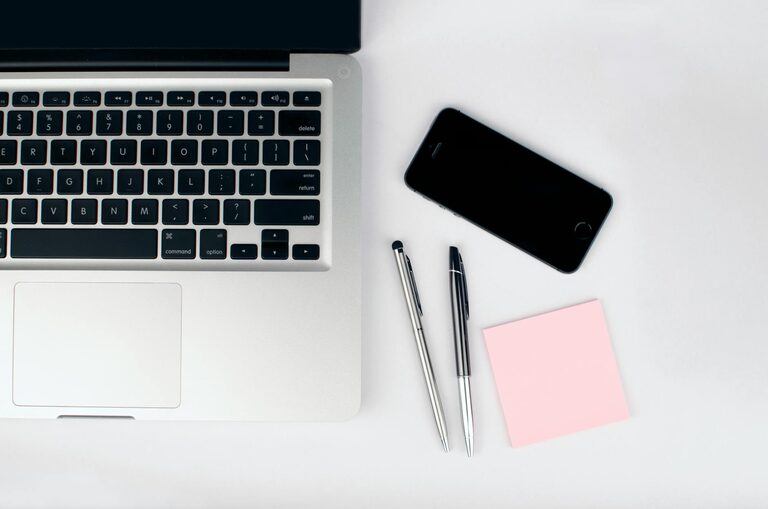In today’s fast-paced world, our digital spaces can easily become cluttered with files, apps, emails, and notifications. Just like a messy room, an overcrowded digital environment can create unnecessary stress and make it harder to focus. The good news? With a few intentional steps, you can declutter your digital life and enjoy a more organized, efficient, and peaceful online experience.
Why Declutter Your Digital Life?
Before diving into how, it’s helpful to understand why digital decluttering matters:
– Improved Focus: Reducing distractions helps you concentrate better.
– Increased Productivity: Easier access to important files and apps saves time.
– Lowered Stress: A clean digital space can reduce feelings of overwhelm.
– Better Device Performance: Removing unnecessary files can speed up your devices.
If your inbox feels like a black hole or your desktop resembles a chaotic junk drawer, read on for practical tips to regain control.
Step 1: Organize Your Email Inbox
Emails pile up quickly, often hiding important messages among newsletters and spam. Here’s how to tackle your inbox:
Clean Up and Unsubscribe
– Delete or archive old emails you no longer need.
– Unsubscribe from newsletters or promotional emails that no longer interest you.
– Use bulk actions to quickly remove large groups of emails.
Create Folders or Labels
– Set up folders or labels based on categories (e.g., Work, Receipts, Personal).
– Automate email sorting using filters or rules.
Practice Inbox Zero
– Aim to keep your inbox empty or near empty.
– Respond to or delegate emails as soon as possible.
– Archive messages once they’re dealt with.
Step 2: Declutter Your Files and Folders
From your computer to cloud storage, cluttered files can slow you down.
Sort and Categorize
– Create clear folder structures (e.g., Documents > Work > Projects).
– Avoid overly complex nested folders.
Delete or Archive
– Remove duplicate or outdated files.
– Archive rarely used documents separately for future reference.
Use Cloud Storage Wisely
– Sync important files with services like Google Drive or Dropbox.
– Regularly review and clean your cloud storage to avoid overuse.
Step 3: Manage Your Apps and Software
Apps can eat up space and distract you if left unchecked.
Audit Your Apps
– Review all installed apps on your phone, tablet, and computer.
– Delete apps you haven’t used in the last 3-6 months.
Limit Notifications
– Turn off non-essential notifications to reduce distractions.
– Adjust notification settings within each app.
Keep Software Updated
– Regular updates not only improve security but often optimize performance.
Step 4: Tame Your Browser
Your web browser is a gateway to information but can also become cluttered with tabs, bookmarks, and extensions.
Organize Bookmarks
– Delete outdated bookmarks.
– Group related bookmarks into folders.
Manage Open Tabs
– Close tabs you no longer need at the end of the day.
– Consider browser extensions that help manage tabs effectively.
Review Extensions
– Remove browser extensions that you don’t regularly use or trust.
Step 5: Streamline Your Social Media
Social media can quickly become overwhelming without boundaries.
Clean Up Your Accounts
– Unfollow or unfriend accounts that don’t add value.
– Review privacy settings to ensure your data is protected.
Set Time Limits
– Use built-in smartphone features or apps to limit time on social platforms.
Schedule Social Media Time
– Allocate specific times during the day to check social media instead of constant scrolling.
Step 6: Backup and Secure Your Data
Once you’ve decluttered, safeguarding your information is key.
Regular Backups
– Set up automatic backups to an external hard drive or cloud service.
– Consider multiple backup locations for extra security.
Password Management
– Use a password manager to organize and secure your passwords.
– Enable two-factor authentication where possible.
Clean Up Old Accounts
– Delete or deactivate accounts you no longer use to reduce risk.
Step 7: Establish Habits to Maintain Digital Clarity
Decluttering is not a one-time task but a habit to cultivate.
Schedule Regular Check-Ins
– Set a monthly reminder to review emails, files, and apps.
Practice Mindful Usage
– Be intentional with new downloads or subscriptions.
– Think twice before saving unnecessary files.
Embrace Minimalism
– Focus on keeping only what is useful and meaningful.
Final Thoughts
Decluttering your digital life is an ongoing journey, not a quick fix. By approaching it step-by-step and incorporating regular maintenance, you’ll create a digital environment that supports your goals, reduces stress, and enhances productivity. Start small, pick one area to tackle today, and enjoy the calm that comes with a clear digital space.

